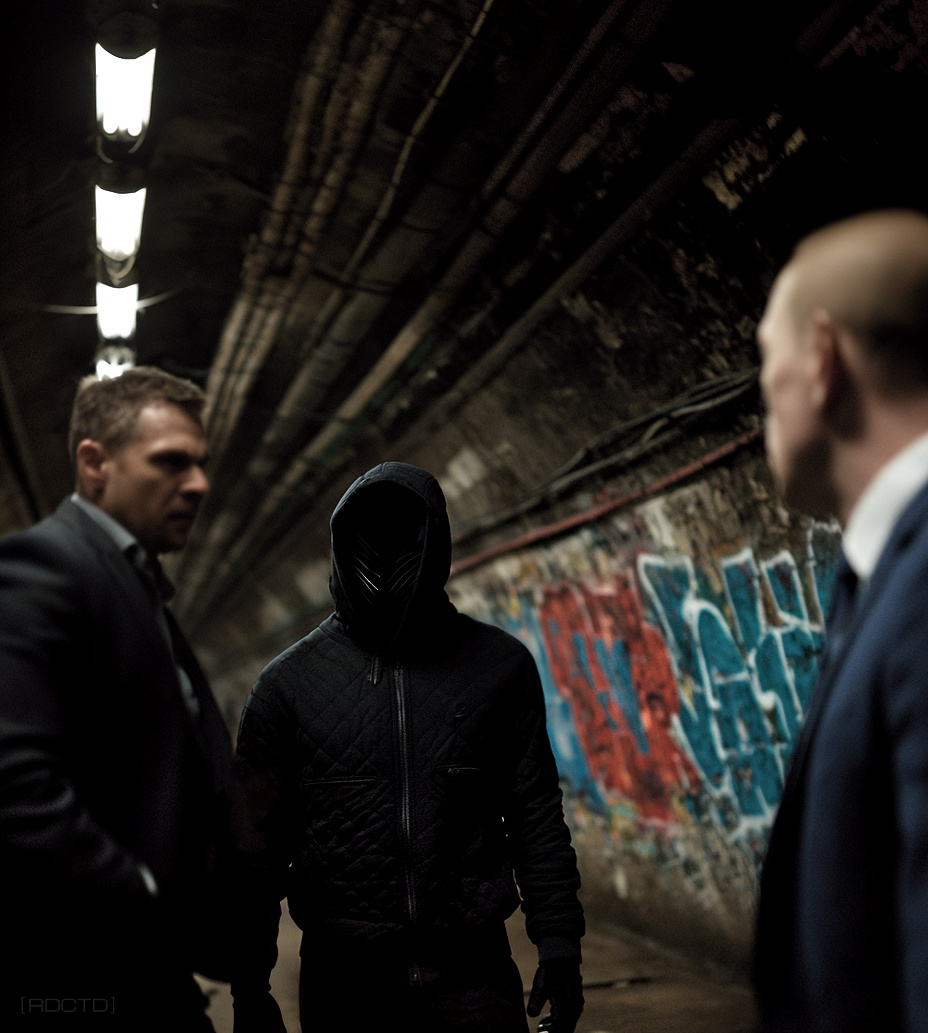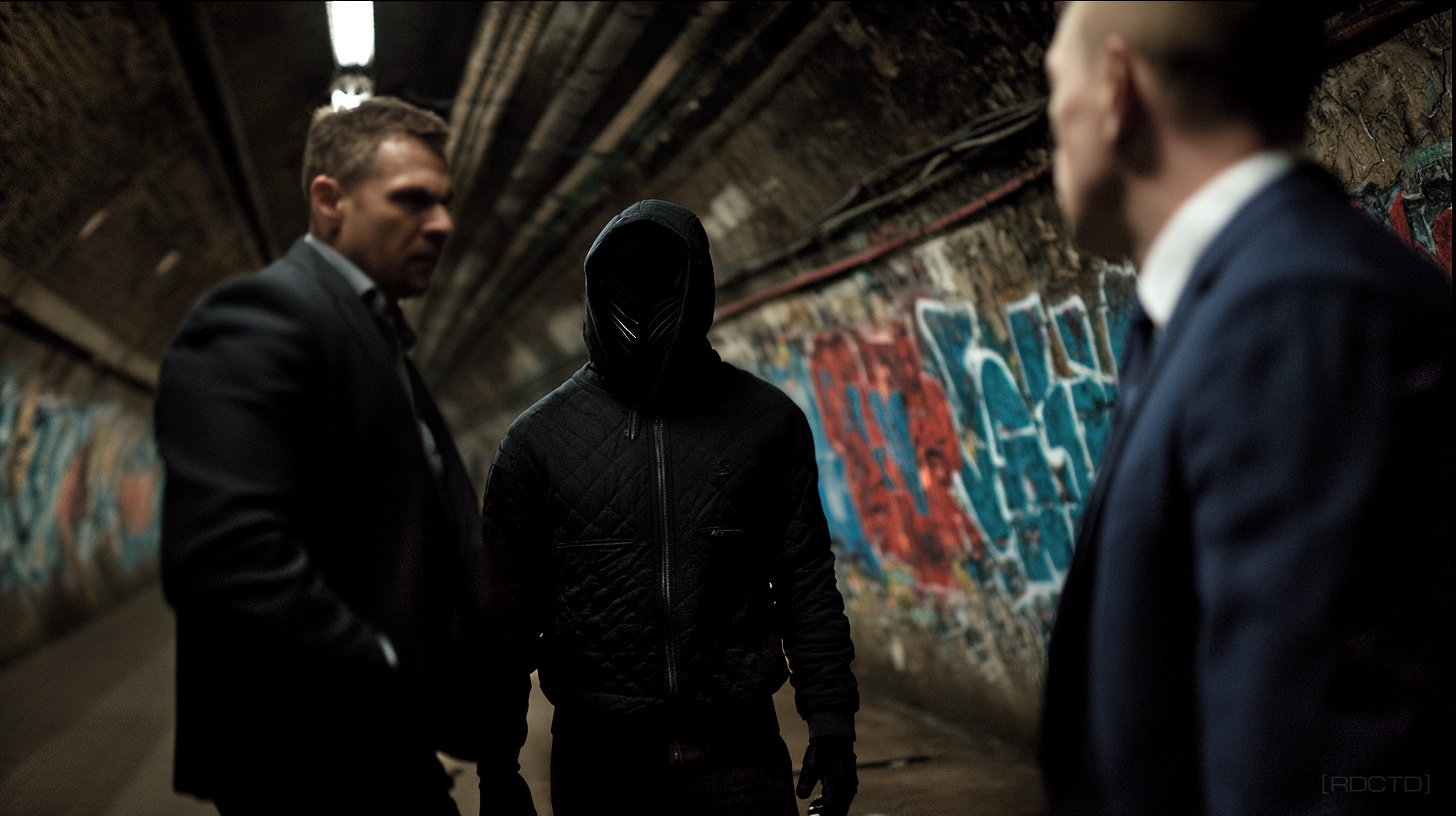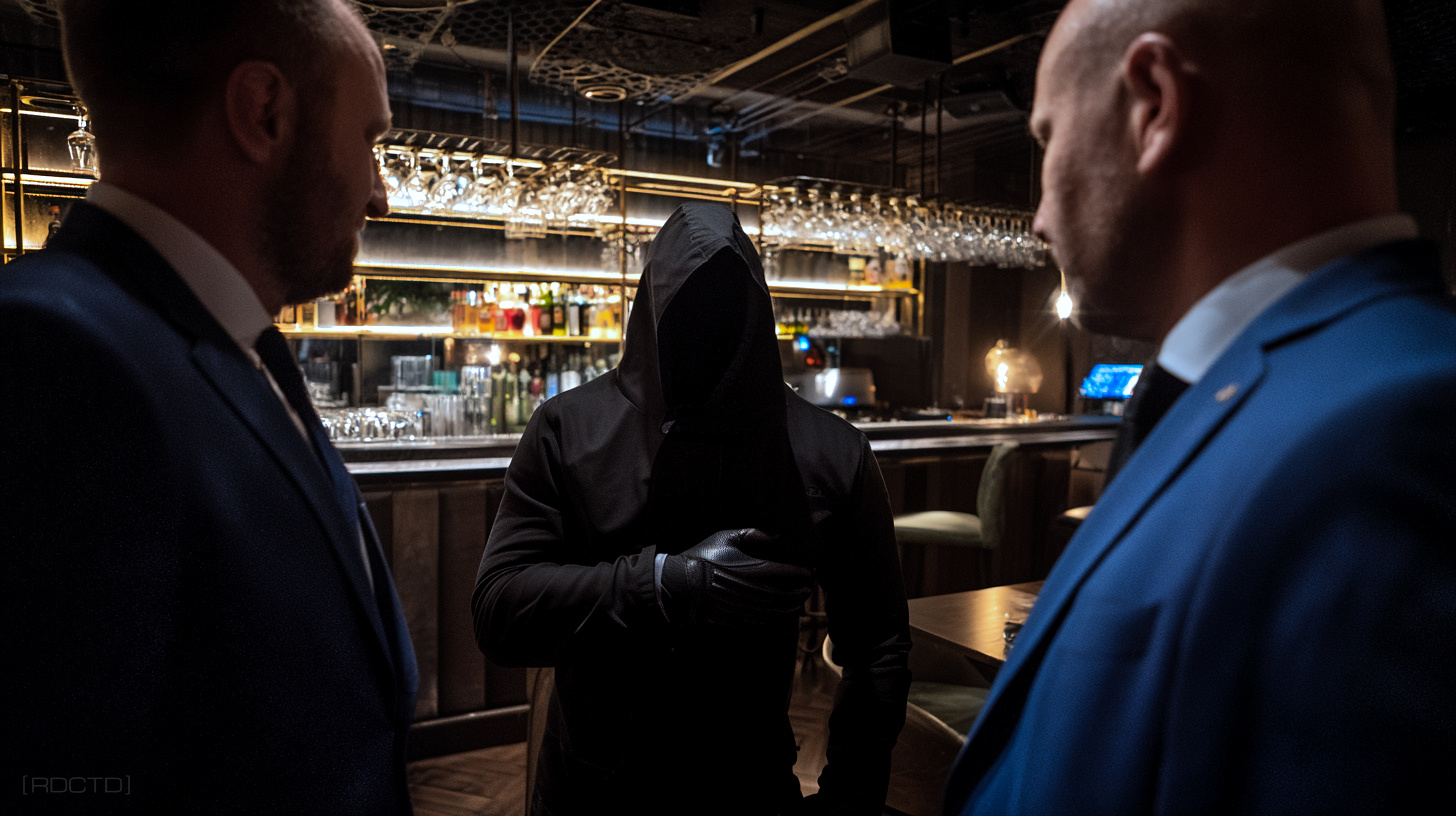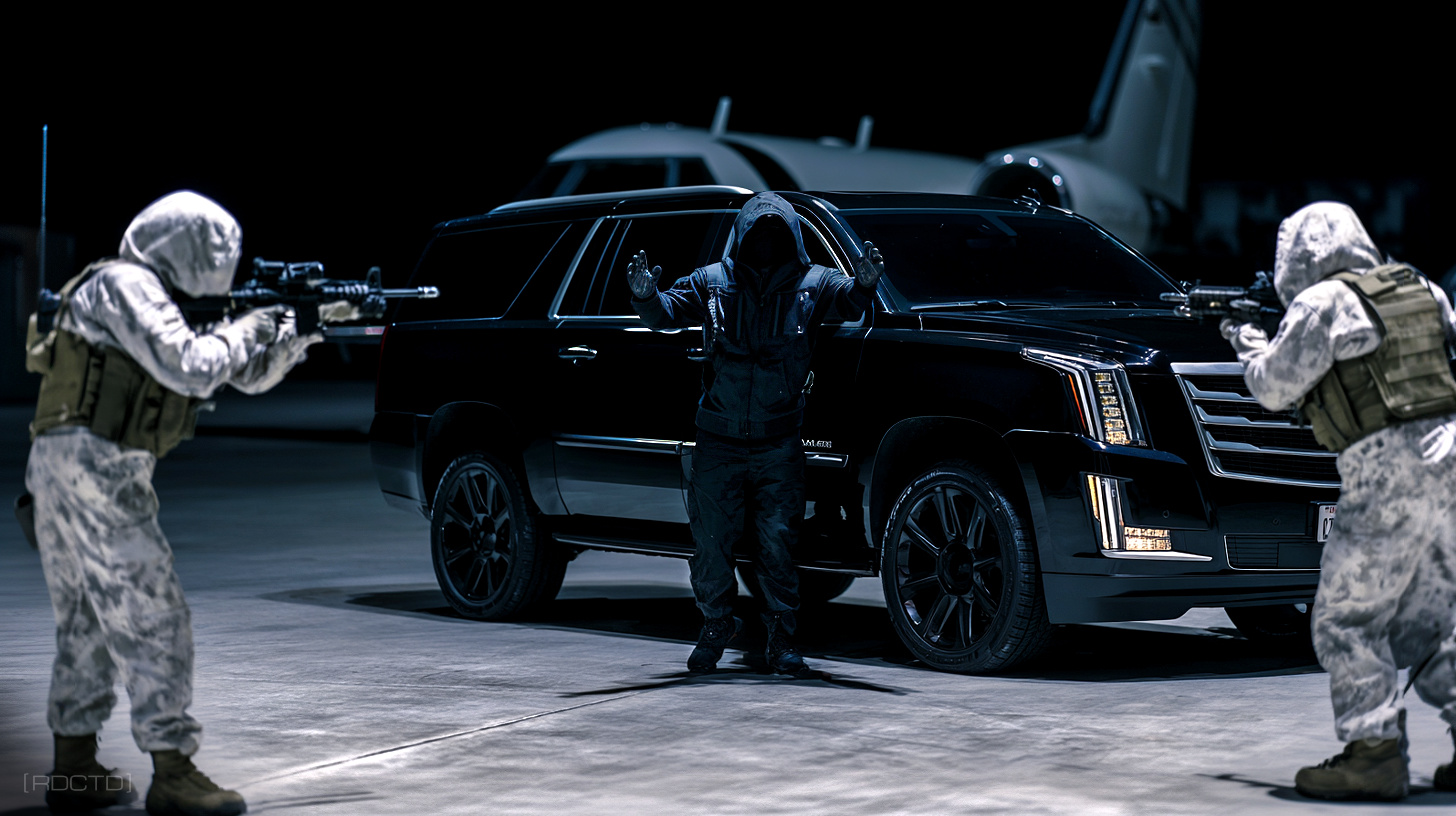 LCQCP is a perception-management tactic used to occupy close-quarters space while minimizing outward threat cues – to gain a temporal position attack advantage in ambiguous interpersonal encounters.
LCQCP is a perception-management tactic used to occupy close-quarters space while minimizing outward threat cues – to gain a temporal position attack advantage in ambiguous interpersonal encounters. ![]()
Before imminent kinetic contact but during neutral interaction, anchor your awareness first, your feet later. Tactical mobility starts in the mind stages before the body moves.
![]()
Latent CQC Positioning is a tradecraft combatives posture where a covert operative deliberately presents a relaxed, non-threatening exterior while occupying a position that compresses the encounter timeline in your favor. The emphasis is on controlling what the adversary perceives – your cadence of movement, micro-expressions, and the rhythm of interaction – so that an adversary underestimates your readiness while reducing their readiness.
The purpose is to shape an opponent’s expectations and reducing uncertainty around their likely actions. It’s not a tactic of a particular type of strike or takedown – it’s positioning for optimal timing to enact a strike or takedown.
![]()
Stay conversationally congruent, your tone and expression must match your posture’s. Match the environment’s rhythm, your motion should disappear into the background tempo.
![]()
[ SYSTEM ]
![]()
LCQCP is controlling what information the potential opponent gets and when they get it during pre-kinetic contact. Compressing uncertainty into predictable slices of behavior so an operative can make a clear choice.
It’s less physical technique and more sensory management, timeline shaping, and reading subtle indicators of intent. When those elements are practiced, an operative gains the ability to steer an encounter toward non-violent resolution or to select the most proportional offensive from a prepared set.
![]()
Sensory Control (what you let them see)
• Framing: Manage which parts of your body and face are visually salient so the opponent forms an incomplete model of your intent.
• Occlusion: Use environment and natural gestures to block attention from sensitive cues without creating obvious concealment.
• Signal Economy: Minimize unnecessary motion and expressive noise so only deliberate, readable signals remain visible to you.
• Attention Distribution: Guide their visual and cognitive focus through conversational rhythm and orienting behaviors rather than exaggerated moves.
![]()
Temporal Control (how you shape the timeline)
• Tempo Modulation: Compress or stretch the pace of interaction (pauses, response latency, conversational speed) to make their timing predictable.
• Event Sequencing: Arrange small, reversible actions in a sequence that forces the other party to respond in limited, observable ways.
• Window Creation: Generate discrete moments – brief, repeatable opportunities – during which intent becomes clear without committing to escalation.
• Recovery Margin: Keep actions reversible so you can return to baseline instantly if the cue you seek doesn’t appear.
![]()
Intent Indicators (what you read)
• Gaze Behavior: Shifts in fixation, avoidance, or hard stares that diverge from casual social patterns.
• Micro-Tension: Subtle limb stiffness, jaw set, or changes in hand readiness that signal preparatory movement.
• Autonomic Signs: Breathing rhythm changes, facial color shifts, or sudden stillness that precede kinetic decisions.
• Behavioral Mismatch: Discrepancies between what someone says and how they behave – timing, posture, and pace – which reveal concealed intent.
![]()
Tempo Alteration Through Small, Reversible Actions
• Use verbal cadence and short social acts to provoke predictable replies without committing to physical contact.
• Make minor positional adjustments (weight shifts, slight angle changes) that are easily undone and reveal reaction patterns.
• Employ environmental cues – changing eye contact to staff, glancing at exits – to force confirmatory responses from the other party.
• Keep every tempo change bounded so it functions as a probe, not an escalation.
![]()
Operational Objective (the desired outcome)
• Turn vague threat into a measurable set of indicators and narrow windows of behavior.
• Give the operative a clear, non-ambiguous set of options – verbal, environmental, or defensive – that can be selected quickly.
• Preserve mobility and reversibility so disengagement remains the easiest, safest choice.
![]()
When integrated, LCQCP becomes a routine of perception management and tempo control for a more flexible combatives posture. Operatives train the senses to notice the small divergences that reveal intent, and they design short, reversible interactions that expose those divergences.
The result is a controlled encounter space where decisions are clearer and the range of responses is intentionally limited to the most effective options.
![]()
Keep weight alive and evenly distributed so every direction is one decision away – yet never hold a symmetrical stance – asymmetry reads as casual, symmetry reads as prepared.
![]()
[ POSITIONING ]
![]()
Environment and placement are central to Latent CQC Positioning. How you hold your body is just as important as where you choose to be inside the environment so the encounter itself does most of the work.
Good placement shapes what the other person can see, where they can move, who else observes the contact, and how easily you can relocate or disengage. Operatives treat space as another tool in their situational kit:
Strategically as a way to turn social settings into controlled information environments where deceptive calm yields useful, low-risk outcomes.
![]()
• Sightlines: Position so your face and upper body are visible enough to appear open, while keeping sensitive zones out of direct, prolonged focus. Use natural furniture and crowd flow to create frames that favor your observational needs.
• Exits and Egress: Choose positions with clear, short egress paths that let you leave without cutting across a crowd. Think in terms of relocation options rather than fixed anchors.
• Staff and Witnesses: Favor areas near staff, security, or visible groups. Their presence raises the social cost of aggression and provides third-party corroboration without you having to call attention to yourself.
• Lighting and Contrast: Use lighting to control visual detail – brighter sightlines for detection, softer light for concealment of micro-movements – so your actions remain socially mundane while you gather cues.
• Barriers and Furniture: Use tables, chairs, and architectural features to channel approaches and reduce angles of unwanted ingress. Let the environment funnel movement in predictable ways.
• Forced Approach Lines: Orient yourself so anyone who intends to close must do so via observable routes rather than through peripheral or obscured avenues. This creates clearer reaction windows.
• Layered Witnesses: Create redundancy in observation – multiple casual observers at differing angles – so a potential adversary knows their actions are more likely to be seen and remembered.
• Occlusion for Perceptual Masking: Use brief, natural occlusions (raising a drink, turning slightly) to interrupt continuous observation in ways that look ordinary but reduce telegraphing of intent.
![]()
When you combine these spatial decisions, LCQCP turns an ordinary setting into a managed encounter space. The operative’s goal is to bias the encounter toward visibility and predictability. To make approaches exposed, to increase passive deterrents, and to produce unambiguous indicators of intent.
This is done without drawing explicit attention. That engineering mindset keeps options open, preserves mobility, and makes the environment itself a partner in controlling risk and gathering information.
![]()
Reposition between sentences, not between movements, conversation masks transition. Keep your hands justified, every visible movement should have a benign reason.
![]()
[ METHODOLOGY ]
![]()
Body economy and concealment of intent are instrumental to Latent CQC Positioning. Think of them as perceptual engineering rather than combat technique.
The aim is to make your outward behavior read as ordinary while you preserve instant mobility and hide telltale preparatory cues. In tradecraft terms, this is movement discipline and perceptual masking.
A strategic set of habits that reduce telegraphing, stabilize micro-movement, and let you use routine social behavior as both cover and probe.
![]()
Displayed Presentation
![]()
Micro-Movement Control
![]()
Signal Economy
![]()
Cover For Action
![]()
Balanced Mobility
![]()
Readiness Telegraphing
![]()
Contextual Congruence
![]()
Framed this way, body economy focuses on remaining inscrutable until you’ve gathered enough information to determine the best course of action. Operatives train these habits until they’re automatic.
The goal is not to manufacture aggression but to deny others reliable cues about your state while preserving your own options. That discipline – low-motion, high-mobility, socially congruent behavior – is what makes LCQCP effective tradecraft in noisy, crowded spaces.
![]()
Use environmental geometry to limit approach angles before you ever need to react. Let your gaze wander naturally to avoid broadcasting target fixation.
![]()
[ FINAL ]
![]()
Train Latent CQC Positioning around decision-making and escalation ladders: detection → confirmation → controlled repositioning → engagement, escalation to offensive measures if absolutely necessary. Run scenario drills that force you to verbalize your indicators for escalation.
Log options you’d take first (verbal, environmental, support), and practice preserving evidence and witness accounts after an incident. That approach keeps it operationally useful and helps you control outcomes.
![]()
// Mask combat readiness beneath normalcy. This gives you the tactical initiative without anyone knowing.
![[RDCTD]](https://rdctd.pro/wp-content/uploads/RDCTD-Covert-Operative-Tradecraft-Guide-LOGO-tk.png)
![[RDCTD]](https://rdctd.pro/wp-content/uploads/RDCTD-Covert-Operative-Tradecraft-Guide-LOGO-mobile.png)





